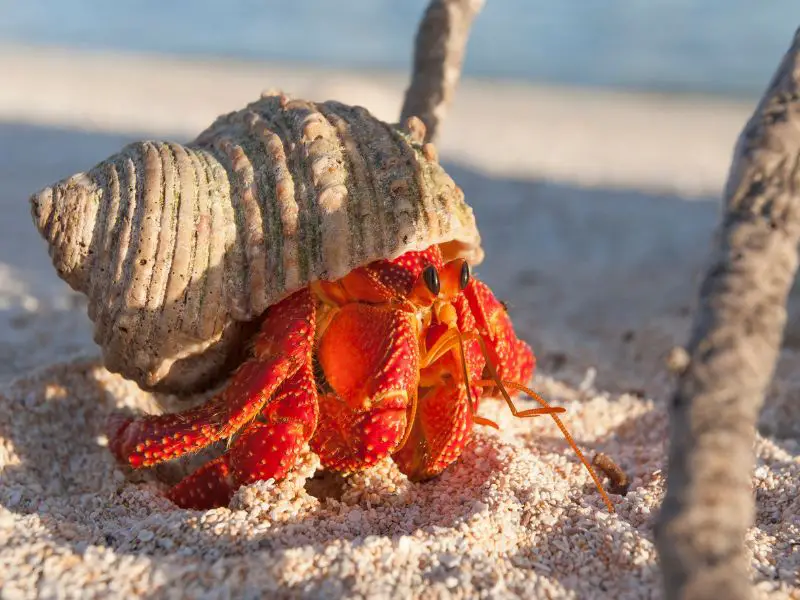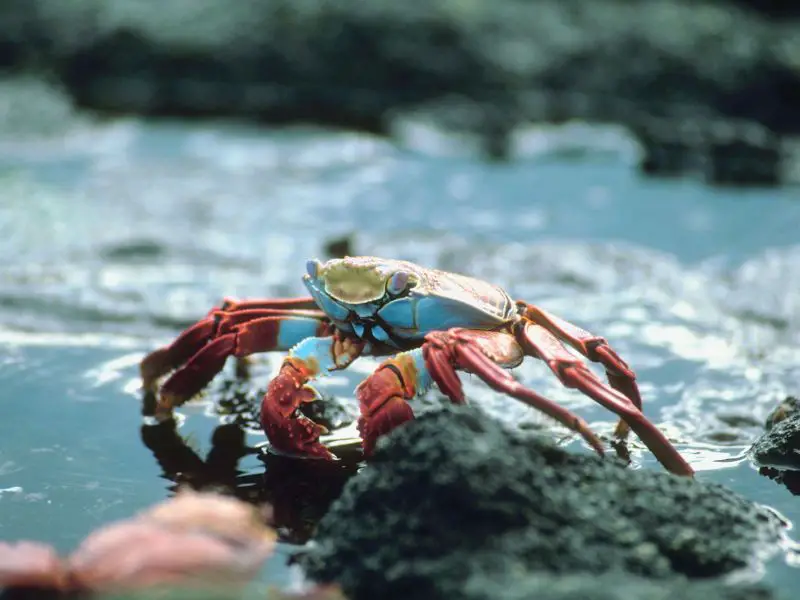Crabs are interesting creatures and are often kept as pets. Crabs make great pets as they are low maintenance and easy to care for. They are also very interesting to watch as they go about their daily business. If you are thinking of getting a crab as a pet, make sure you do your research first to make sure you can provide everything they need.
This is the same question people wonder about whether turtles and tortoises can swim. The answer to this is that crabs can swim but not in the same way that humans or other animals do.
Table of Contents
Fun facts about having a crab as a pet:
Crabs make great pets because they’re low maintenance and interesting to watch. They are also very sensitive to changes in their environment, so you will need to be careful not to disturb them too much.
If you are thinking about getting a crab as a pet, be sure to do your research first. There are a few things you will need to know, like how to care for their gills and what type of food they eat.
Crabs are also known to be escape artists, so you will need to make sure their home is secure. With a little bit of effort, you can have a fun and rewarding experience owning a crab as a pet.
But, can crabs swim?
Many people don’t know that crabs can swim. This is because they have a number of adaptations that enable them to do so. One of the most important adaptations for swimming is their laterigrade legs. This means that their legs are specially adapted to move sideways, which is perfect for swimming. In addition, crabs have gills that they use to breathe underwater.
Crabs can also float in the water thanks to their hard shells. This helps them to stay buoyant and means they can drift along in the water without using much energy. So, next time you see a crab on the beach, don’t be afraid to give it a little nudge into the water and watch it swim away.
What crab species can swim?
There are several crab species that are able to swim including the fiddler crab, the hermit crab, and the Pacific red crab. These crabs all have laterigrade legs and gills that enable them to breathe underwater.
Fiddler crabs
These crabs are named for their large claws, which they use to attract mates. The males have one large claw and one smaller claw, while the females have two small claws. Fiddler crabs are found in warm coastal regions and brackish waters.
Hermit crabs

Hermit crabs are different from other crab species as they cannot produce their own shells. Instead, they must find shells that they can occupy. As hermit crabs grow, they must find larger shells to live in. Hermit crabs are found in tropical and subtropical regions all over the world.
Pacific red crab
The Pacific red crab is a species of crab that is found in the Pacific Ocean. These crabs get their name from their bright red coloration. The Pacific red crab is an important species in the commercial crab industry.
Can all crabs swim?
No, not all crab species can swim. Some land-dwelling crab species such as the coconut crab and the Christmas Island red crab cannot swim. These crabs live on land and are not found in water. These crabs have adapted to living on land and don’t need to return to the water as they can get all the moisture they need from their food.
Why do crabs swim upside down?
One of the most common questions people ask about crabs is why they swim upside down. The answer to this question is not fully understood, but there are a few theories. One theory is that it helps them to avoid predators. Another theory is that it helps them to stay cool in warm water.
Some crabs such as the horseshoe crabs swim right side up. This is because they have a different type of gill that enables them to breathe in air. Horseshoe crabs are not true crabs, but are more closely related to spiders and scorpions.
Do all crabs live in the water?
No, as we’ve already seen, not all crab species live in the water. Some crab species such as the coconut crab and the Christmas Island red crab live on land. These crabs have adapted to living on land and don’t need to return to the water as they can get all the moisture they need from their food.
Can Blue crabs swim?
Blue crabs are not born swimmers. It takes a lot of energy and practice for them to stay afloat, but eventually they get the hang of it. There are several things that help blue crabs swim: their large claws, which act as paddles; their flat tails, which work like rudders; and their gills, which absorb oxygen from the water.
All of these adaptations come in handy when blue crabs are trying to escape predators or find food.
Can a crab swim in its larval stage?
The larval stage of a crab’s life is spent in the ocean, where it has to swim to survive. The larval stage is when a crab is most vulnerable, so it’s important for them to be able to swim quickly and accurately. Luckily, their gills give them the ability to breathe underwater and their long tails help them move through the water with ease.
Do crabs like swimming?
While we can’t know for sure what a crab is thinking, it’s safe to say that they don’t exactly enjoy swimming. It takes a lot of energy and effort for them to stay afloat, so you’ll often see crabs taking breaks on the shore or in shallow waters.
However, there are some situations where crabs have no choice but to swim. If the tide is coming in and a crab is in danger of being swept away, it will swim to safety. Some crabs also migrate during specific times of the year, which means they’ll have to do a lot of swimming.
Why are crabs washed on the beaches?
One of the best places you’ll find crabs is on the beach. And there’s a good reason for that – waves and currents can wash them ashore. Crabs are often caught in these same currents and swept away to their death.
Beachgoers often find these poor creatures stranded on the sand, far from the safety of the water. If you ever come across a crab on the beach, it’s best to leave it be or gently return it to the water.
Can crabs swim like a fish?
The simple answer is yes, crabs can swim but not in the traditional sense that we think of when it comes to fish. Fish use their tails to propel them through the water while crabs use their legs. In addition, crabs are not very good swimmers and can only swim for short distances and at slow speeds.
In conclusion
Owning a crab as a pet is not for everyone but if you are up for the challenge, they can make for interesting and unique pets. If you are looking for a more traditional pet like a dog or cat, then a crab is probably not going to be the right fit. But if you are open to something different and are willing to put in the time and effort, then a crab could be a fun and rewarding pet.
